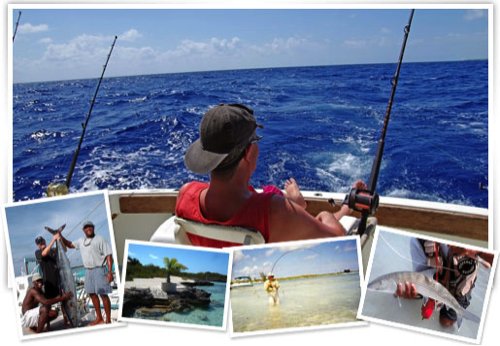<p style="text-align: justify;">Famed for their incredible speeds and difficulty to catch, wahoo are one of the most popular targets for game hunters in the Caribbean. The fish, characterised by their long, elongated body, tiny scales and astonishing speeds, are notoriously tricky to catch. They travel through the water at around 60mph and any given expert will have their own view on how to net these creatures.</p>
<p style="text-align: justify;">High speed trolling? Low speed trolling? Lures? Jigs? Kite fishing? For a novice, it’s difficult to know where to start! Before your <strong>deep sea fishing </strong><strong>vacation</strong> what’s needed is a comprehensive guide on how to catch these tricky, nimble fish.</p>
<p style="text-align: justify;"><img class="aligncenter wp-image-1924 size-full" src="https://incrediblemag.com/wp-content/uploads/2015/08/Inactivities5.png" alt="A Guide To Catching Wahoo" width="500" height="346" /></p>
<h2 style="text-align: justify;"><strong> How Fast?</strong></h2>
<p style="text-align: justify;">There are a number of schools of thought on how fast you should be trolling to catch wahoo. Some experts recommend as fast as 22 knots, whilst those in favour of low speed trolling suggest 8 to 9 knots.</p>
<p style="text-align: justify;">One piece of advice is to start off at a brisk 20 knots and try your luck for an hour or so. If the fish aren’t biting, slow the boat down to a steady 15 knots and try your luck there. If you still don’t have any luck, bring it down to 9 or 10 knots. Whilst many experts say there is no point going slower than 15, at this speed there’s a much greater chance of catching other fish such as marlin or tuna; not what we’re after here but certainly an added bonus.</p>
<p style="text-align: justify;">Another thing to consider is that trolling at higher speeds is noisy and more expensive. If you are looking for a more relaxing experience, knock down the knots to around 9 or 10.</p>
<h2 style="text-align: justify;"><strong>Where?</strong></h2>
<p style="text-align: justify;">Wahoo prefer structures and so can be found around wrecks, debris and weed lines. Floating debris often comes with dolphin, but wahoo can often be found around 50 to 60 feet deeper. If you’ve chartered your own boat and are responsible for navigation, check with local guides before you depart. Otherwise, your captain will likely know of local hotspots that are popular with wahoo.</p>
<p style="text-align: justify;">Wahoo swim beneath the surface and attack fish from below. If you spot smaller fish, drop the bait to around half a metre beneath the surface and set your lines. Look for any floating debris and troll around it. The fish can be pulled up from anywhere between 60 and 600 feet deep.</p>
<h2 style="text-align: justify;"><strong>What Bait?</strong></h2>
<p style="text-align: justify;">Wahoo are picky specimen, preferring red or purple and black colours to anything else. The typical trolling choices of pinks, whites and blues are not ideal for catching wahoo so should be avoided. Large ballyhoo rigged behind rubber skirts are the best for attracting a wahoo attack.</p>
<h2 style="text-align: justify;"><strong>What Tackle?</strong></h2>
<p style="text-align: justify;">Most tackle suitable for offshore trolling is fine to use to catch wahoo, but make sure you use a wire leader. A 100lb braided line is fine for wahoo trolling. You’ll likely need a test steel leader of 80lb for the line to survive an attack from a wahoo’s powerful jaws and razor sharp teeth.</p>
<h2 style="text-align: justify;"><strong>What Technique?</strong></h2>
<p style="text-align: justify;">Trolling is the most popular method of catching wahoo, and the one you’ll almost certainly use as a beginner. As mentioned, the speed of the troll is up for debate but faster is typically better. You may still have luck at slower speeds although you’re likely to pick up other fish such as tuna and marlin too.</p>
<p style="text-align: justify;">You’ll need to drop a number of lines. Use these guidelines when trolling areas of heavy bait concentration or around weed lines.</p>
<p style="text-align: justify;"><strong>Short flat line:</strong> your shortest line should be around 100 feet back. Use a large cigar sinker that is no less than 20 feet of leader. It should be made predominantly of mono, as it is stealthy but won’t succumb to the teeth of the wahoo.</p>
<p style="text-align: justify;"><strong>Second flat line:</strong> the next line should be a little shallower than the short. By setting it out at around 150 feet you can be sure it will remain above your short line and not get tangled.</p>
<p style="text-align: justify;"><strong>Third flat line:</strong> the last flat line should be even shallower, so use a weight around 300g lighter than the one you used for the second flat line. Let out 250 feet to ensure the lines do not tangle.</p>
<p style="text-align: justify;"><strong>Riggers:</strong> These should be kept tight, low and unweighted to ensure they do not get tangled with your other lines.</p>

A Guide To Catching Wahoo
